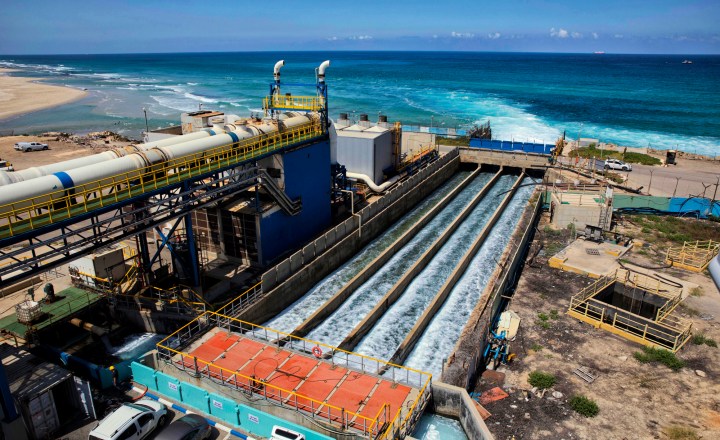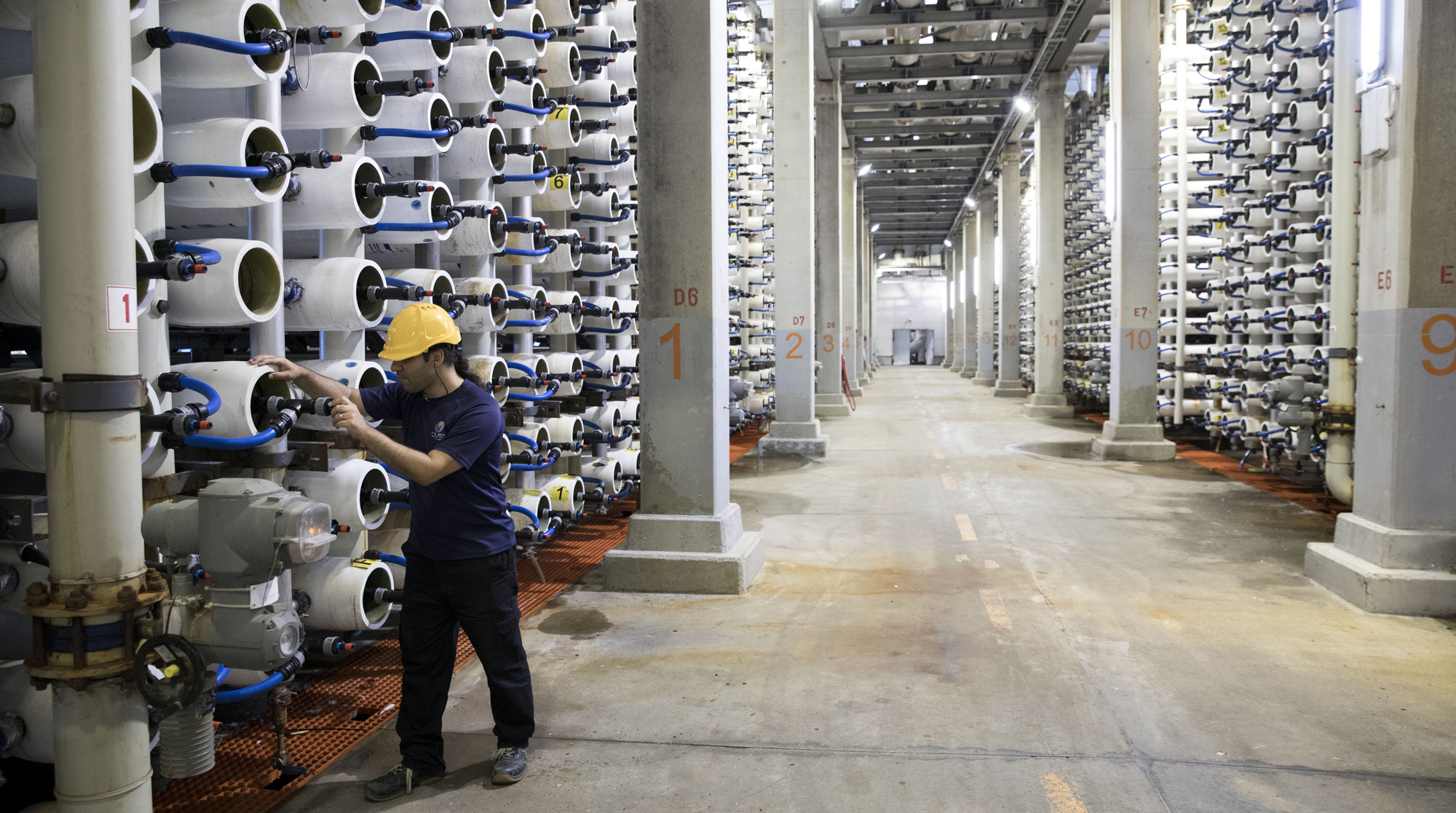Our Burning Planet
‘Water, water everywhere’… but what are the final costs of ocean desalination?

Some research suggests that impacts of desalination plants can extend for several kilometres from outfalls, while higher water temperatures and salinity could provide stepping stones for alien or non-indigenous species to spread.
Desalination plants — those magic water factories that convert seawater into a liquid you can drink with confidence — have mushroomed dramatically over the past two decades as clean water shortages spread across the world.
Indeed, the Ancient Mariner’s lament about his raging thirst amid an abundance of undrinkable seawater could gradually become a thing of the past as improvements to desalination technology enable the large-scale removal of salts and minerals from the ocean
But, there is a hitch: How to turn this abundant resource into drinking water without harming life in the sea and adjoining coastal environment because of the growing torrent of brine water and chemical pollution from nearly 16,000 desalination plants scattered around the globe.
A study published on 14 January by United Nations’ water researchers says there has been an “exponential increase” in global desalination capacity compared to 20 years ago — and a concomitant increase in the flow of polluted, hyper-salty brine water into the ocean.
While the biggest plants are located in the Middle East, North Africa, Spain and small island nations, the study estimates that there are now 15,906 desalination plants operating in 177 countries (with more than 300 in Sub-Saharan Africa).
South Africa has about 10 small desalination projects, including pilot plants built in the coastal cities of Cape Town and Richards Bay after the recent severe drought. Similar plans have been proposed to ease growing water demand in the Durban area.
The new research suggests that 40% of the world’s people face severe water scarcity already, and that this bleak situation will only get worse because of human population growth, development, inland water pollution and climate change.
And while removing salt from seawater remains a costly option compared with more conventional sources such as damming up rivers, the authors say desalination has vast potential if the power-generation costs and growing environmental concerns can be addressed.
Dr Manzoor Ali and fellow researchers from the United Nations University’s Institute for Water, Environment and Health estimate that for every litre of fresh water produced, desalination plants generate on average 1.5 litres of brine (though values vary dramatically, depending on the water salinity and technology used).
Globally, these plants now discharge 142 million cubic meters of hypersaline brine every day — enough to cover the US state of Florida under 30cm of brine water each year.
Ali and his colleagues say desalination effluents pose major risks to adjoining ocean life and marine ecosystems as the hyper-salty brine pushes up the salinity of the receiving seawater. The effluent can also contain toxic chemicals from antiscalants and antifoulants that are used in the desalination and filtration process (including copper and chlorine).
A third impact, says lead author Edward Jones, is that brine plumes also deplete the level of oxygen in the receiving sea waters.
“High salinity and reduced dissolved oxygen levels can have profound impacts on benthic (sea bottom) organisms, which can translate into ecological effects observable throughout the food chain,” he said.
Israel’s National Institute of Oceanography has also raised concerns about the rapid growth of global desalination, warning that environmental impact research in this area remains in its infancy.
“Since seawater reverse osmosis effluents are growing in volume, our lack of full understanding of their long-term impacts demands more, not less, caution,” according to researchers Dr Nurit Kress and Bella Galil.

A worker of Hadera seawater desalination plant checks the sea water pressure vessels in Hadera, Israel, 19 June 2018. EPA-EFE/ABIR SULTAN
They say current research papers mostly address the desalination process only, focusing on recent improvements made in energy consumption, membrane efficiency and other novel processes.
However, articles focused on marine environmental impacts were in large part descriptive and non-quantitative and resorted to ambiguous and vague vocabulary.
Field and laboratory studies were few, and important data from impact studies and monitoring reports were not peer-reviewed or accessible.
“The whole field is fraught with sparse data and non-validated models. In an industrial context, we have essentially only ‘pilot studies’, which do not supply a scientifically based rationale for the public policy,” they wrote in an article in 2018.
Kress and Galil say brine discharge guidelines mainly address hypersalinity and consider the reverse osmosis desalination plants in detachment from many other human-based stressors, rather than cumulative stress loads.
“Monitoring at the brine’s outfall is usually measuring salinity, temperature and a few other parameters, providing only a rudimentary and deficient view of the environment.”
They do not accept the narrative of proponents who suggest that desalination is largely a benign process. They point instead to an increasing body of research and case studies in the Middle East, Australia and California showing that brine effluents impact marine life in the vicinity of outfall pipes, including seagrasses and corals that serve as a nursery area for fish.
Some research suggested that some impacts can extend for several kilometres from outfalls, while higher water temperatures and salinity could provide stepping stones for alien or non-indigenous species to spread.
While Israeli legislation requires an EIA as part of the planning of a desalination plant, Kress says the true structure of some chemical treatments are not disclosed and no effluent toxicity tests are required.
The Department of Water Affairs was asked to provide details on environmental monitoring requirements for South African desalination plants, but no response has been received. DM


















